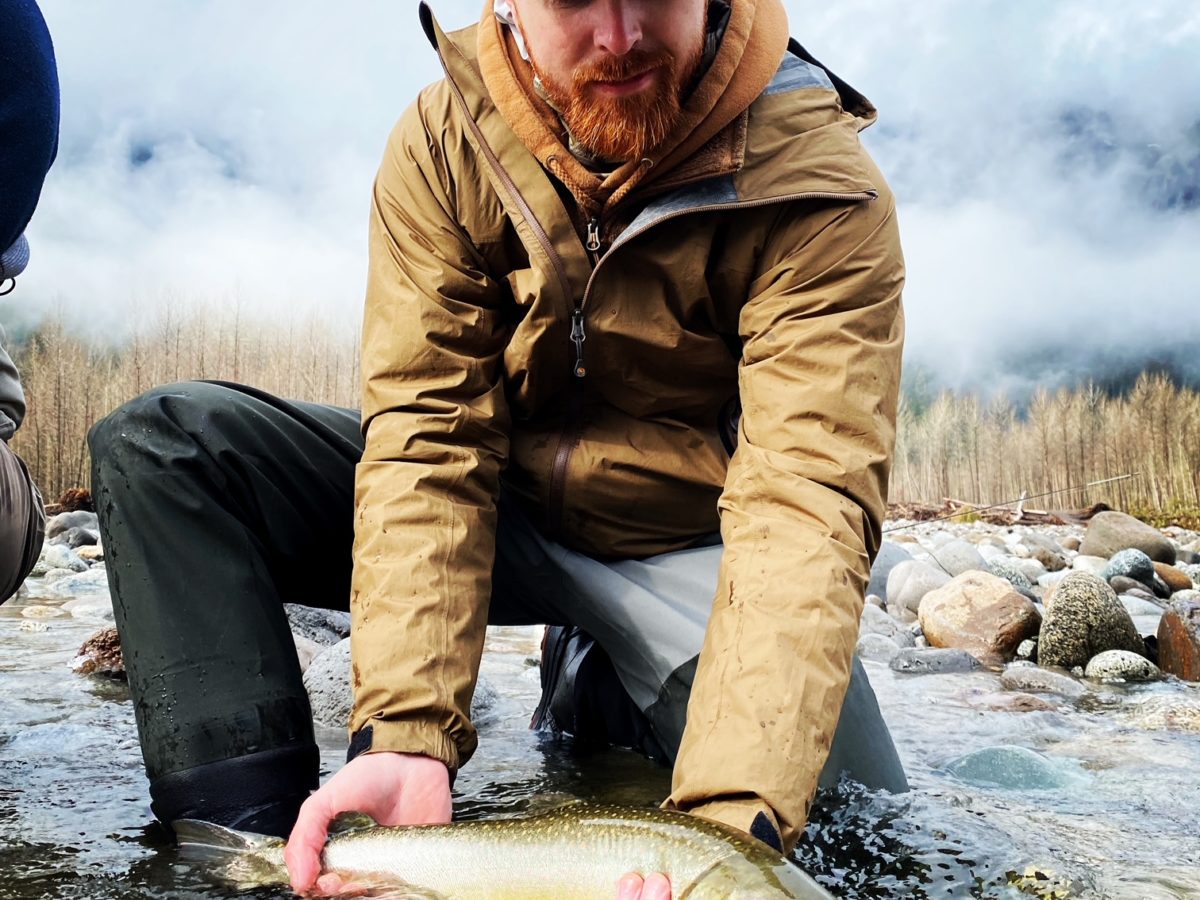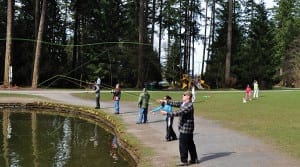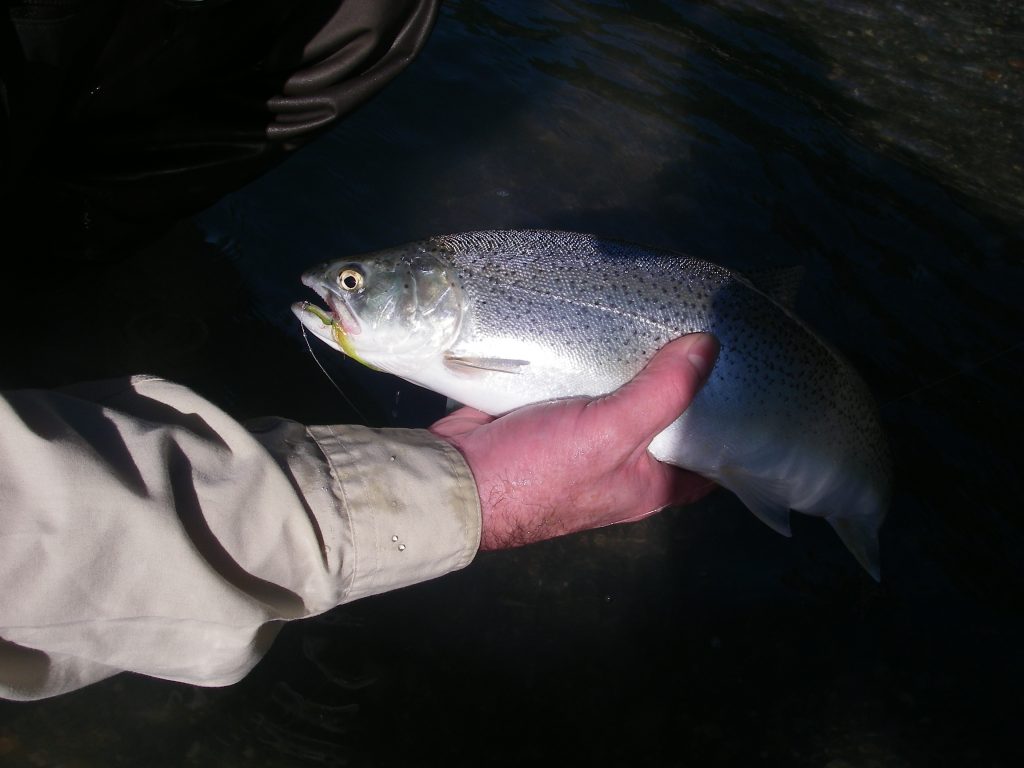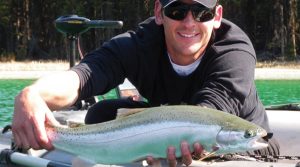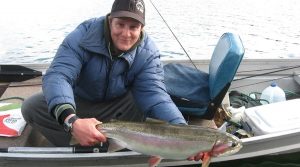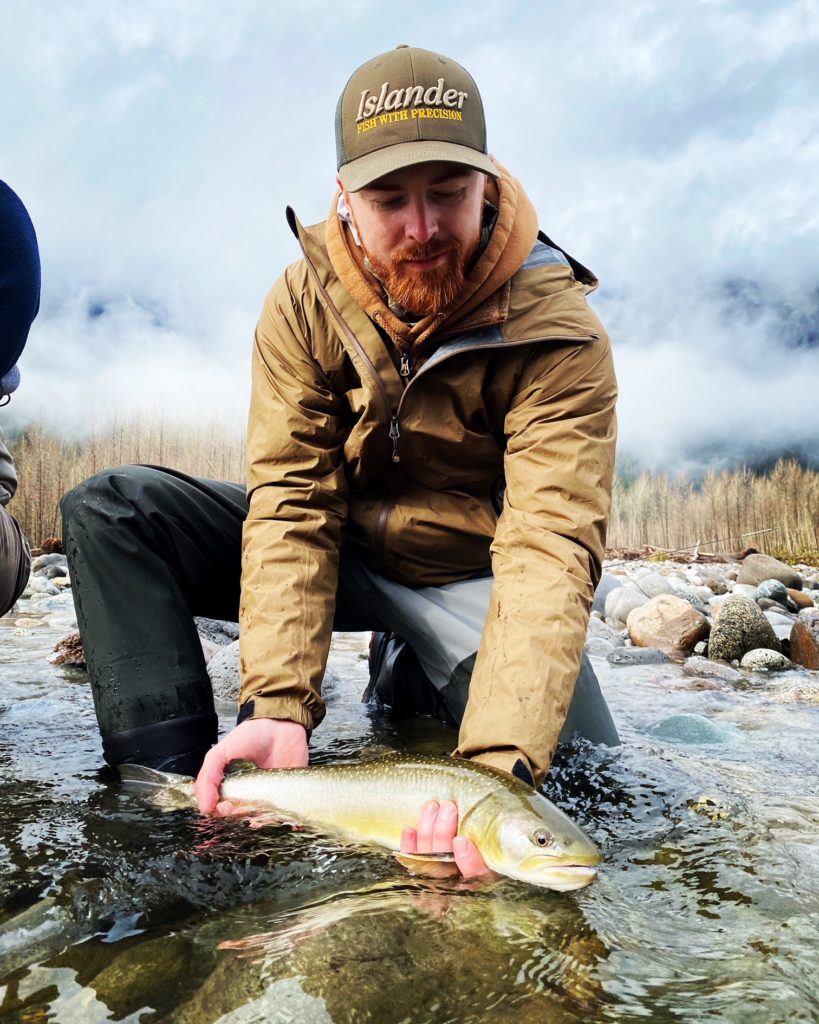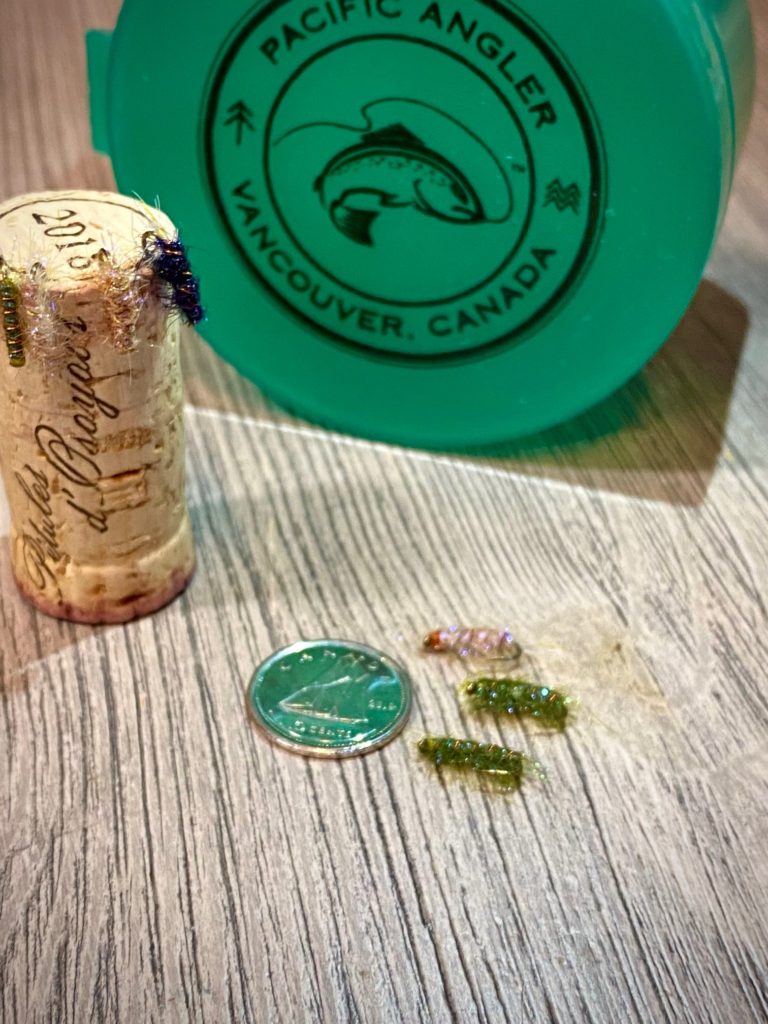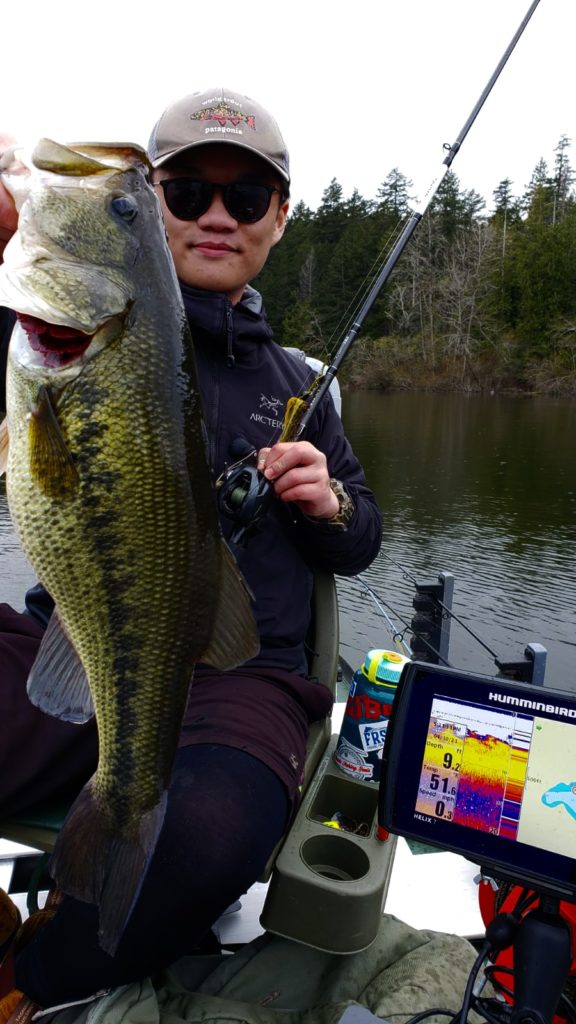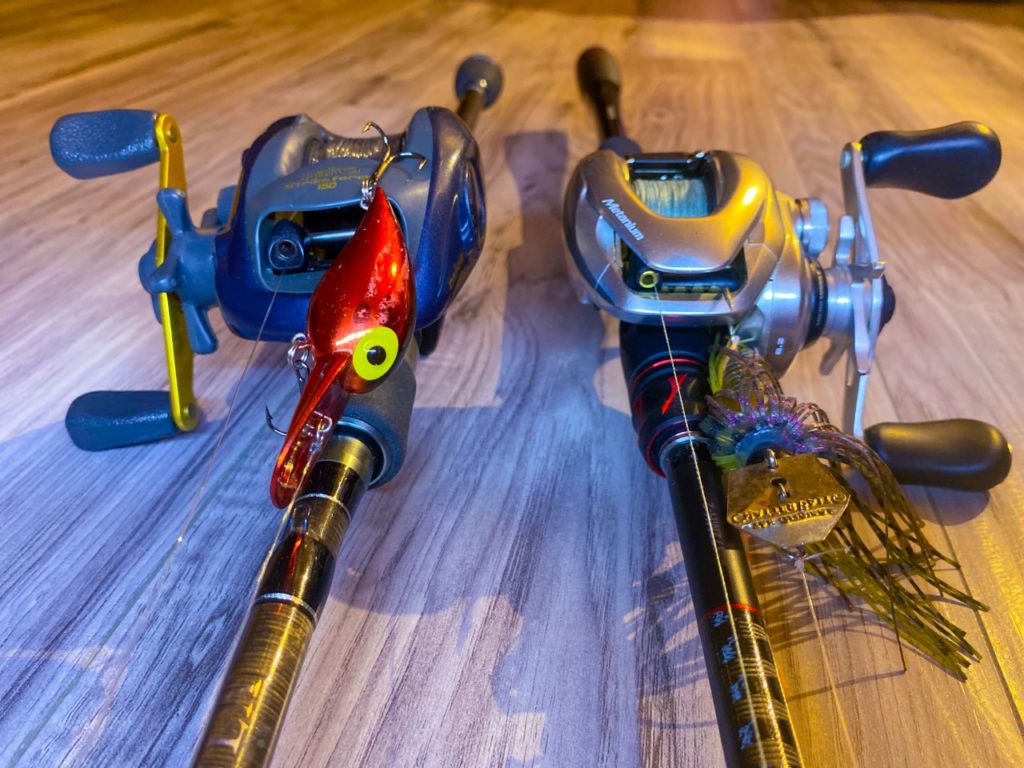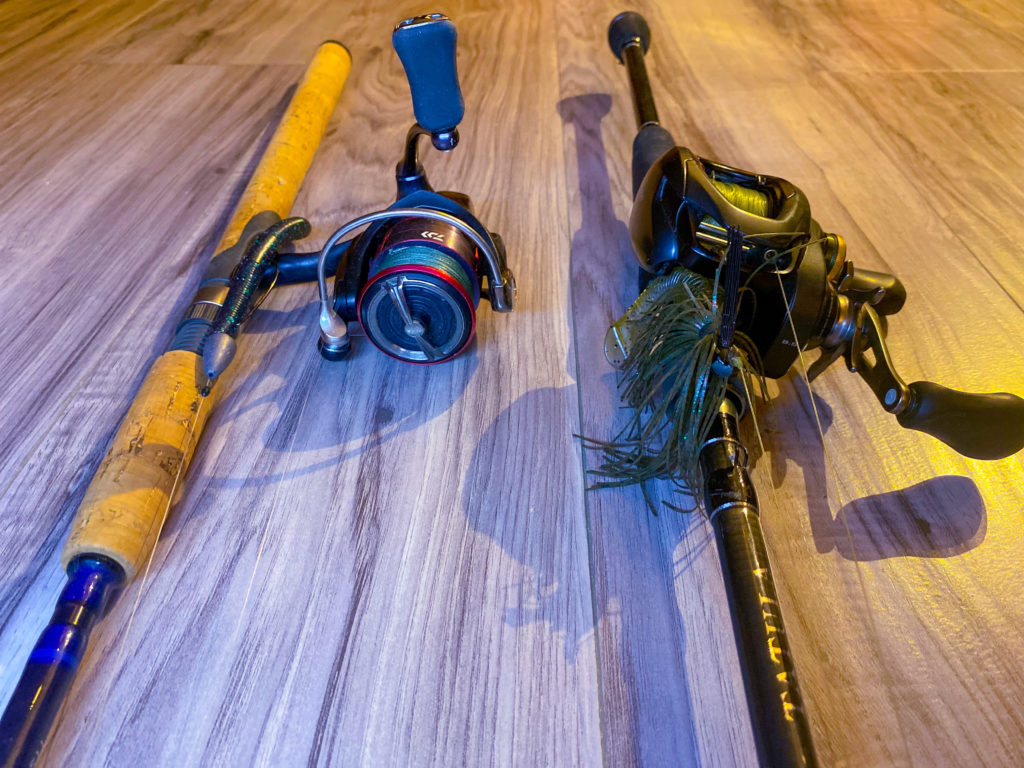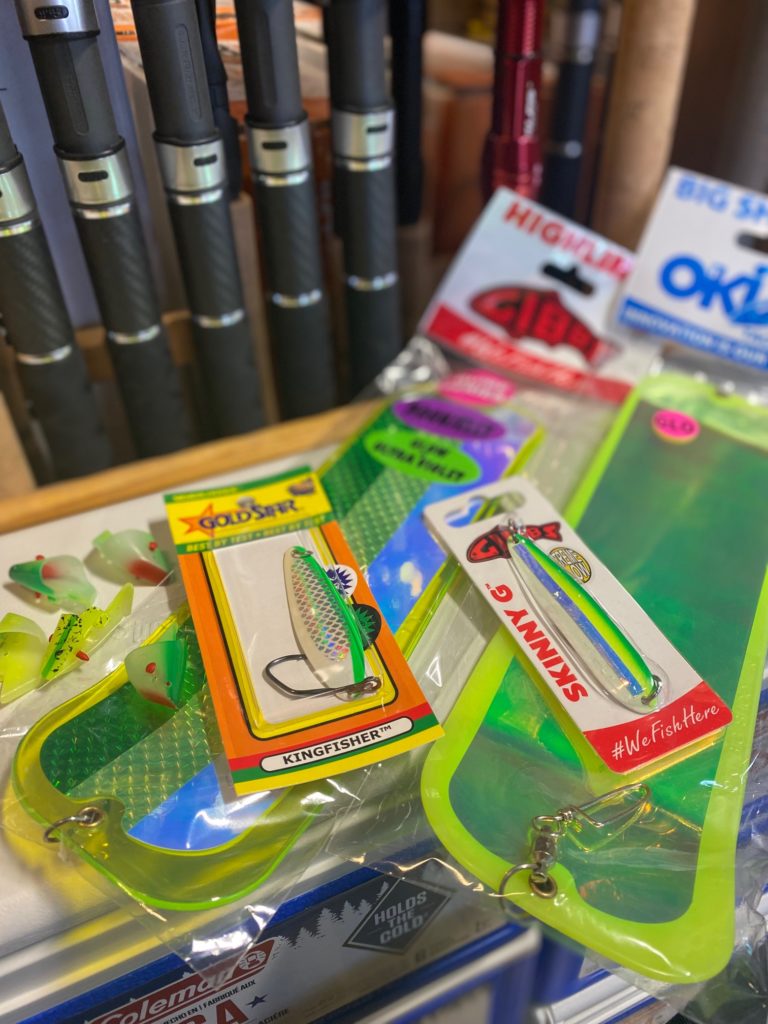OUTLOOK
We saw some rain over the last week. Rivers rose but they didn’t rise hard. In many areas we would have liked to see more water. The good news is more is on the way. With 20-25mm up the Sea to Sky highway and 5-15 out Chilliwack way it looks like a wet but good weekend to get out fishing.
We have info on the Chilliwack and Squamish in the Freshwater section below and reports have been solid. We also have some great features this week on fisheries that are coming up. Gavin has an early season bass fishing piece and Sterling has a great overview of how to fish scuds for early season lake fishing. We are excitedly waiting for lakes to ice off in the interior!
Last, on the fishing report front, we have a saltwater update. With a possible April 1 closure looming, get out while you can! Fishing has been good and it is well worth the trip. Details at the back end of the report in the Saltwater section.
We also have some big news for the store this week. Our Spring Super Sale is back. Two days only – March 26th and 27th! You will see deals on every major brand in the store and it will be a great time to stock up on gear for the spring season – lake fishing stuff, fly tying, fly rods, salmon gear and more. Make sure you are subscribed to our mailing list + Instagram and YouTube as we will be announcing more details over the next week!
On the course front, there are still a couple of spots in some of the upcoming on the water courses so if you’re thinking of joining one of our courses don’t delay. Upcoming spring courses are noted in our Classes and Courses section. Call the shop at 604.872.2204 to sign up.
On to the report!
INDUSTRY EVENTS AND UPDATES
Our Spring Sale Is Back!
Mark your calendars for Saturday March 26 and Sunday March 27, 2022. After being on hiatus for a couple years its back – our Spring Super Sale. Keep an eye on your inbox and our social media feeds for the full sale details to come next week!
CLASSES AND COURSES
INTRODUCTION TO FLY FISHING
This course was specifically designed to give the new fly fisher the basic knowledge, casting skills and fly fishing strategies to effectively fish our local BC waters. This course is comprised of two sessions; 3hr evening seminar and a 3hr casting session. The dates below show the seminar date first and casting date second.
Dates: (Apr 6 & 9), (May 10 & 14), (Jun 15 & 18), (July 12 & 17), (Sept 20 & 24)
Cost: $150.00 + GSTSeminar
Time: 6:30pm – 9:30pm
Casting Time(s): 10am – 1pm or 1:30pm -4:30pm
FLY FISHING FOR SEARUN CUTTHROAT TROUT IN RIVER
This spring make sure to get out and take advantage of the world-class cutthroat fishing in the Lower Mainland. This cutthroat course is designed to educate you on the life cycle, location, seasonal feeding habits, and successful techniques and flies used to catch these elusive yet aggressive fish. This course consists of a 3hr evening seminar and a fully guided day on the water.
Dates: Zoom Seminar Mar 23, 2022
Guided Mar 26, 27, Apr 2 or 3, 2022
Zoom Seminar Only Cost: $50.00+GST
Zoom Seminar & Guided Walk’n Wade Cost: $275.00+GST per angler, minimum of 2 anglers per guided day on the water.
Zoom Seminar Time: 6:30pm – 9:30pm
Guided: Full Day
INTRODUCTION TO CHIRONOMID TECHNIQUES
Chironomids are the number one food source for trout in BC’s lakes; however, few anglers have taken the time to become true masters of this discipline. Those that do are often rewarded with the largest fish. Trevor is a former member of the Canadian Fly Fishing Team and an excellent chironomid angler. Dedication to his sport has helped Trevor become one of the top fly fishermen in the province as well as a fisheries biologist. This course is comprised of one 3hr evening seminar. Content is for beginner to advanced.
Cost: $50.00+GST
Zoom Seminar Date: Wednesday, April 27
Zoom Seminar Time: 6:30-9:30 pm
INTRODUCTION TO FLY FISHING LAKES
This course will give you an in-depth look at the fundamentals of fly fishing lakes. We explore equipment, techniques, major insect hatches, and ideal lakes to begin with. You will learn all you need to plan your next successful lake trip to one of BC’s 5,000 lakes! This course is comprised of one 3hr evening seminar.
Cost: $50.00+GST
Zoom Seminar Date: April 5
Zoom Seminar Time: 6:30-9:30 pm
FRESHWATER FISHING REPORTS
Chilliwack/Vedder River Fishing Report
We’re now well into March, and the Vedder/Chilliwack system has continued to be productive for those who are willing and able to put in some time and effort to find fish. There will be a mix of fresh and not-so-fresh fish in the system by now, so keep that in mind when covering water. As mentioned in my last report, the fresh ones will most likely respond to a presentation very quickly, while the fish that have been in the system a little longer will probably need more coaxing before they bite. Also, be aware that the upper river, above Tamahi bridge, closes at the end of the month, as per the new regs that came out last year.
The heavy rain that we saw in town last week didn’t seem to hit Chilliwack, so the river didn’t bump that much as a result… although I’m sure the minor increase in water levels got some fish moving. There’s a lot of rain in the forecast at the moment, but conditions for the weekend and next week will be dictated by how much rain actually falls. In any case, there are good numbers of fish spread throughout the whole system, and it’s worth getting after them if you’ve got over a foot of visibility to work with. If the water is a bit dirty, bring bigger presentations with large profile, scent, and/or flash/vibration to give the fish the best chance of finding your gear. Cover water and fish close to shore; that’s where the fish will be.
Try to avoid wading in back-channels whenever possible, as the gravel will be sheltering the salmon fry and alevins that survived the winter. Baby Salmon are fragile and don’t usually tolerate being stepped on very well, so avoid squishing fry by simply staying out of rearing habitat whenever possible.
Taylor Nakatani
Squamish River Fishing Report
We saw a small but noticeable rise in river levels last week. With the higher water levels, we saw fishing reports that were better than the last few weeks but it was still not enough water to push the clarity and height into what we would consider “perfect” fishing conditions. The good news is mother nature is going to take another crack at it this weekend. With 20-25 mm forecast for today (with most of it coming overnight) and 10mm Saturday we expect good conditions.
We were out over the week and saw some bulltrout fishing and heard a few whispers of anadromous fish in the system.
If you get out and you see colored green water with 3ft of visibility it is “perfect”. Fish olive or white streamers for the char species and it might not be a bad idea a swing more brightly colored patterns in the lower river if you are hunting for unicorns.
Gear anglers had luck this week with spoons and spinners for bull trout but we would also recommend Colorado blades and pink worms at this time of year.
Good luck out there!
Matt Sharp
STILLWATER FISHING REPORTS
Ice off season is approaching fast. Kamloops is starting to touch 15 degrees and even the Cariboo should start seeing some double-digit weather days. Ice off is an exciting time as everybody is breaking open their boxes with the 100s of flies they’ve tied over the last couple of months. One pattern that always seem to be neglected due to its simplicity is the scud. It’s little more than a size 12-16 pattern with a bit of dubbing, some wire, and maybe even a bead or scud back depending on who’s tying them. So much time is put into tying complicated patterns that we sometimes assume that the more complicated they are the more fishing you will catch with them. For me when it comes to scuds, I subscribe to the KISS principle and the pattern below is one of the simplest patterns that you can tie.
The reality is that fish love scuds. They especially love them when it’s right at ice off when no other food source has started to really emerge and proliferate. Scuds work great in the colder water as they’ll freely keep swimming along and doing their thing. Fish key in on these easy prey as trout will often push up quite shallow right at ice off. People tend to naturally gravitate to the 12-25 feet of water as that’s where fishing is the most productive for 90% of the year but I’d strongly encourage you to try fishing in areas shallower than 10 feet in the early season.
I tend to tie all my scuds on unweighted size 14-16 hooks. I like fishing unweighted scuds as I find that the wire and a sinking line is more than enough to get me down 6-10 feet. I tie all my scuds on nymph hooks but you can also use a curved scud hook. I prefer the nymph hooks as I’m typically imitating a moving scud. Freshwater scuds lay flat as they move and a nymph hook is much better at imitating that movement than a curved scud hook. Curved scud hooks were more designed to imitate sow bugs and scuds that you’d find in rivers where you’re typically fishing a scud or sowbug in a curled position. These curved scud patterns are great for hanging under an indicator but when I am moving a scud with a retrieve on a sinking line the nymph hook looks much more natural.
When it comes to colours, the main colours I’d focus on are light olive, olive, dark olive, brown, and tan. Try and match your scud pattern to the colour of the water. Alkaline rich lakes are very clear and you’ll notice that all the vegetation and marl will be a pale olive or light brown. I’ll throw a light olive or even tan scud if I notice that the stomach pumps yield really light coloured scuds. Acidic lakes tend to be darker in colouration and have a deeper brown hue to them. Dark olive and brown patterns are the choice in that situation. Mixing in a bit of light yellow or tan in dubbing mixtures can be a great move to match the translucent nature of a lot of these scuds as plants haven’t started to really grow so scuds tend to match the lakes marl.
Shallower water means that there are a ton of lines that you can have in your arsenal to effectively fish scuds. I really love either Rio’s Sub-Surface Aqualux II Intermediate line, Rio’s InTouch Hover fly line, Scientific Angler’s Sonar Stillwater Camo Clear, or Scientific Angler’s Sonar Stillwater Hover as they get the fly down to the effective depth. Slow sinking lines are the easiest setup as all what’s needed is a standard 9’ leader with a bit of tippet. A floating line works great too but a bit of math needs to be done for the leader. I’d go with an approximate 15 ft leader if I was fishing in 10 feet or so. Fishing in 5 feet of water means that I’m stepping down to an 8-10 ft leader. A lot of it depends on wind and the weight of the scud I’m using. You can also always stick a scud under an indicator on a floating line on windier days as the wind action will give your fly a ton of movement. Keep your retrieve fairly slow with a few sporadic inch long retrieves thrown in there to give it a bit more life.
If you want to check out another great retrieving style scud pattern, Andre just released a video on his Easy Scud it is “Prettier” than my patterns and I will admit I have a few in my box as well when I think the fish want something a little more sophisticated but it might be more for the angler than the fish. Either way it is a great fish producer! Check that video out here.
If you are at the bench and want some more great lake patterns check out our “What’s in Our BC Lake Fly Box” video. Matt goes over the staples that you will want to have in your arsenal.
Best of luck!
Sterling Balzer
SPECIAL FEATURE
Local Bass Primer
Pre-spawn is the time of year when largemouth and smallmouth aggressively fatten up in preparation to do the deed. Not coincidentally, it’s also the time bass anglers get all giddy as it cues the start of the bass season. In southwest BC, its typically Late March-Early May for largemouth. Each system has a different timing for it and even within a system not all bass go through the spawn at the same time; while some may be just starting pre-spawn others may be finishing off and transitioning into post-spawn. They all have one thing in common, pre-spawn bass are some of the chunkiest of the year.
Just like salmon, bass do not feed during spawning, so they rely heavily on their reserves that they have amassed during prespawn feeding. A high protein diet packed with crayfish, pumpkinseeds and juvenile bass is on the menu all spring.
Where do you start?
Contrary to popular belief, there are many similarities between bass fishing and trout or salmon fishing. Temperature is key. Just like approaching a lake after ice-off in the interior for trout, look for the north side of the lake. Being protected from the chilly northern winds and receiving the most sunlight hours, it is generally the first part of the lake to warm up. Not too different from a bowl of hot chowder that cools down at the edges first, the edges of the lake warm up before the centre. The magic number to look for is 50 degrees Fahrenheit or 10 degrees Celsius, once water temperature reach the 50 degree threshold, largemouth turnover from lethargic roamers to aggressive feeding in preparation for spawning. Use your fish finder to locate parts of the lake that reach 50 degrees first. Shallow flats and reed beds that are 10-4ft are ideal spawning locations that bass will migrate to from their deeper wintering holes. Bass will still correlate with structure during pre-spawn, focus points include logs, sunken trees and lily pad stem fields.
Tactics targeting pre-spawn bass can be separated into two polar sectors, burning baits fast or very slow. The beauty of pre-spawn in southwestern BC, is that most of the spring is either overcast or raining. Bass will feed in open water unlike the bright days of summer, so that means burning a lipless crankbait over transition lines or bouncing a jerkbait can be done without hanging up on pads or structure.
My top picks for moving fast include bladed Jigs, spinnerbaits, lipless and standard crankbaits in red.
Working fast leaves very little time for bass to decide if they want a bait or not, usually resulting in an explosive strike. Unfortunately, all of these are very prone to hang-ups in weeds or structure; they shine best in less vegetated areas. A simple fan cast and retrieve is used with fast moving baits to cover water methodically.
Sometimes the temperatures are still too cold for them to turn on; slowing right down can trigger lazy bass into committing. Fishing a jerkbait is a fun way to target suspended bass in colder water. Timing the pop and pause depends on water temps, use 50 degrees as a baseline, the colder the temps are, the longer the pause. Crawling a Texas-rigged Neko Straight worm along the bottom is another way to trigger bites when bass don’t want to co-operate.
My top picks for slow forage baits include: jerk baits, Neko Straight Worms, large swimbaits and football jigs.
Gear Talk:
The quiver of a well-seasoned bass angler may seem very intimidating for most salmon or trout anglers who usually only carry 1 rod with them when there’s typically anywhere from 4-8 rods on a bass boat per angler. Yes, each rod does have a specific purpose but it is not necessary to have it all in order to catch fish. Having 1 or 2 quality rods to cover water and follow up is enough to get started. Generally, I will start with a moving bait to cover water fast and follow up with a slower “clean up” bait if a fish was missed (Just like swinging for steelhead)! To avoid retying, a secondary rod makes putting something different through the same water a breeze. As a general rule, anything with treble hooks; jerkbaits and crankbaits are prone to shake offs, to avoid that they are fished with a full monofilament line due to the lack of stretch. Anything with a singular hook can be used with either 20-40lb braid with 15lb flouro leader or straight 20lb fluorocarbon to get a direct hook set. Medium Heavy Baitcasting Rods in 6’6-7’6 are a great all-purpose rod that will cover most baits you will use. A Medium action spinning rod spooled with 20lb braid is a deadly tool for fishing finesse worms at a slower pace. A heavy action rod with a 300 size conventional reel is perfect for slow rolling a large swimbait along the bottom of the lake.
Slow Baits:
7’6″ M Baitcasting rods – Jerkbaits and Crankbaits
7′ ML Spinning rods – Finesse Worms and Light Texas Rigs
8′ H Baitcasting rods – Large Swimbaits
Moving Baits:
7’6″ MH Baitcasting rods – Bladebaits, Spinnerbaits and Jigs
This was a lot of information to digest, but hopefully it will get you guys excited for this upcoming fishery. If you have any questions, feel free to come in the shop and talk with us.
Cheers,
Gavin Lau
SALTWATER FISHING REPORTS
Saltwater Salmon Fishing Report
It’s looking a bit wet and windy this weekend, but you might want to get out there and get after it as fishing has been pretty good these past few weeks. There has been some nice fish caught in Vancouver Harbour and the usual Howe Sound spots. Mostly the 8-pound class but there have been a few fish in the low teens as well.
Keep in mind we are likely going to see the no fishing for chinook regulation come in on April 1st, so if you want to retain or even fish for chinook, you better do it in March. The SFAB, PFA, and SFI have all been pushing DFO very hard for some opportunity come April 1st, but it has been an uphill battle. There will be meetings and more pressure put on DFO right up until the end of this month, you can count on that.
If you are heading out this week, this time of year chartreuse if often the go to colour when it comes to flashers, spoons, hootchies or bait teaser heads. The days are getting longer, the surface temperatures are getting warmer, and we start to see some algae blooms which colour up the water. In these conditions the brighter chartreuse gear seems to work the best.
There are a lot of good combos out there, but some of our all-time favorite this time of year are the Salty Dawg or Lemon Lime Chartreuse flashers paired up with 3.5 Kingfisher Irish Cream or Skinny G Trailhead spoons. These bright setups with a bit of anchovy or herring gel scent on the spoon are always solid producers in March. A chartreuse glow spatter back hootchie is also a great choice, in particular the Yamashita OG140R with a 32-36 inch leader behind the flashers as we’ve already mentioned. If you want to roll some bait, the No Bananas in glow is great this time of year.
Crabbing is picking up a bit, as per usual for March. Prawning is getting tougher as the grounds have been picked over for a good 4-5 months now.
See you in the shop or on the water,
The Pacific Angler Team


